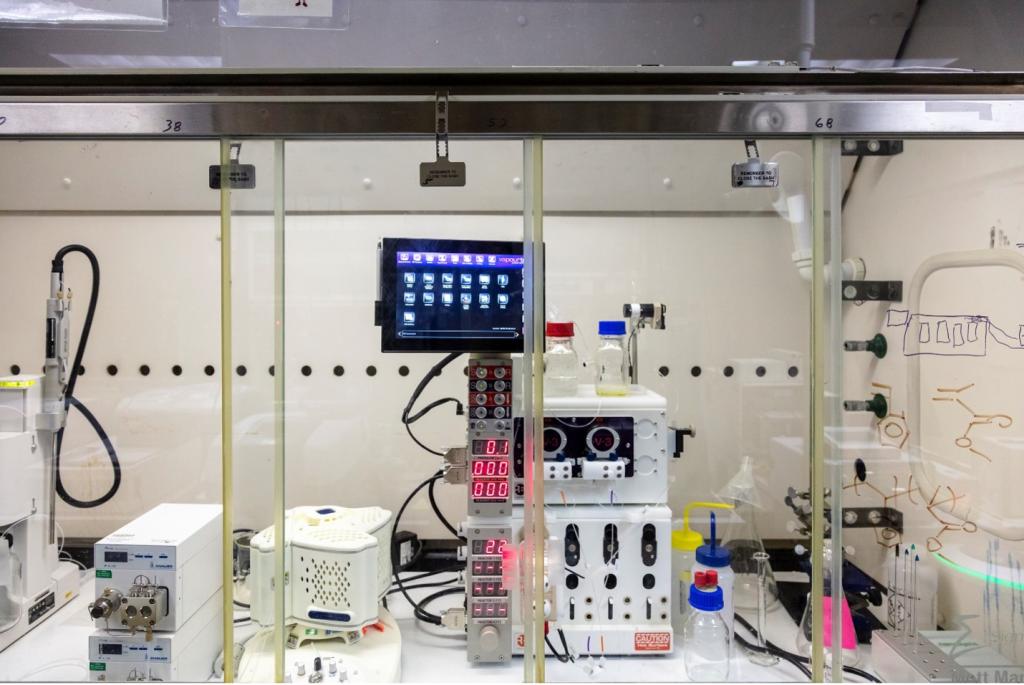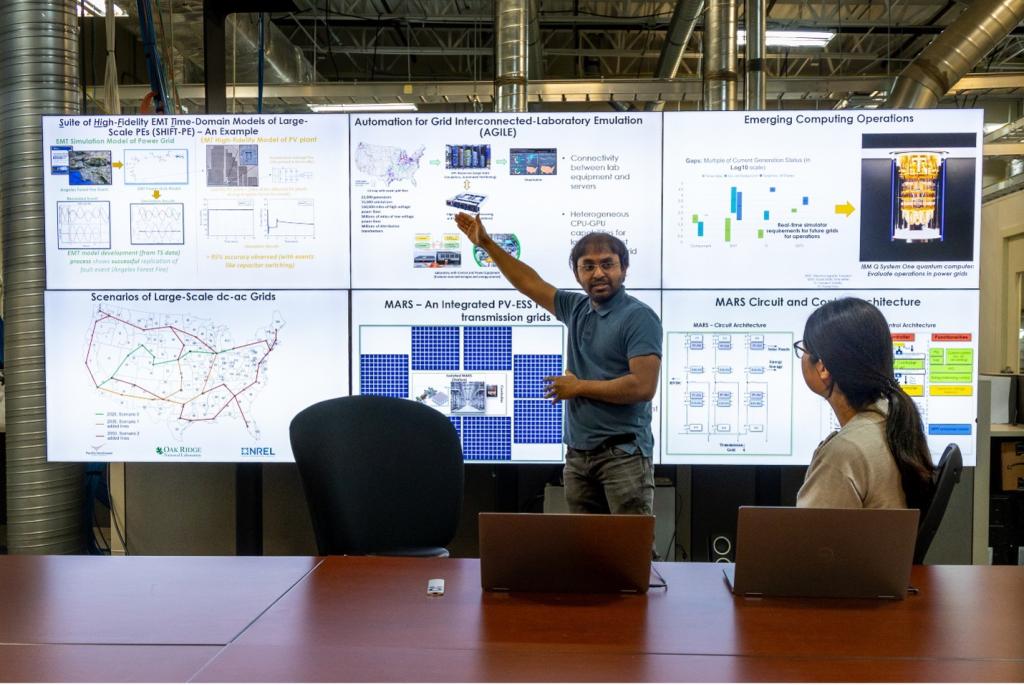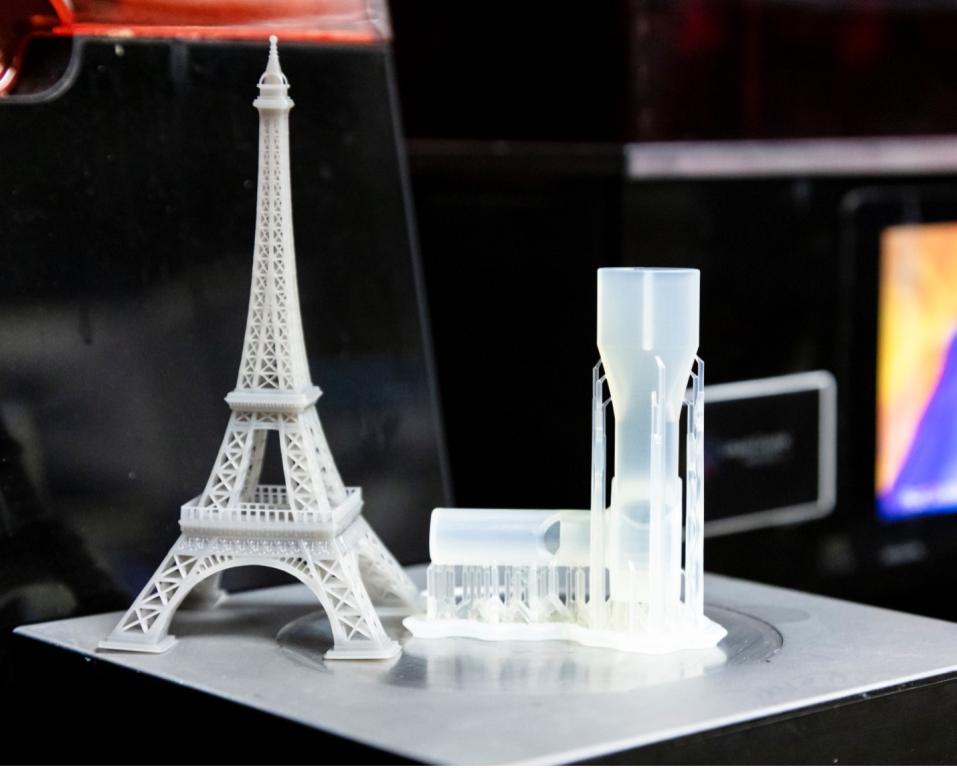Autonomous labs are changing the nature of scientific investigation. Instead of humans manually orchestrating every part of an experiment, programmed equipment can carry out necessary functions. This workflow accelerates the pace of discovery by reducing the number of monotonous tasks that researchers must perform.
As these labs are created, software infrastructure that constellates researchers, experimental machines and artificial intelligence frameworks must be developed. To address this need, the Department of Energy’s Oak Ridge National Laboratory launched the Interconnected Science Ecosystem Initiative, or INTERSECT, in 2022.
This initiative established six autonomous labs, each targeting high-impact applications — from fundamental discoveries in chemistry and quantum information science to advanced techniques in electron microscopy. Other INTERSECT labs have developed scalable capabilities in applied sciences, such as additive manufacturing, materials production and electric grid optimization.
“Science is moving in the direction of autonomous labs,” said Ben Mintz, co-director of INTERSECT with Robert Moore. “The current problem is that scientists are developing autonomous capabilities within specialized fields, leading to isolated efforts that often overlap. Instead, we need state-of-the-art labs that connect these areas by managing cross-discipline data and multilab workflows.”

INTERSECT labs share much of the same software despite the diversity of disciplines they serve. Computer scientists regularly meet with domain researchers who manage these ecosystems, identifying their key needs and desired capabilities. Then, architecture, software and integration teams design solutions that can be used across all labs.
Importantly, this initiative increases access to equipment capable of autonomously completing complex functions. One INTERSECT lab hosts an automated scanning transmission electron microscope — an important tool for condensed matter physics, materials science and chemistry. Previously limited by the speed and ability of its operator, the automated microscope can collect and model data more effectively, learn structure-property relationships, and provide feedback about scanning locations discovered through remote computing resources.
Despite the futuristic nature of these labs and equipment, automated systems will not replace researchers. “We’re not taking scientists out of the lab,” Mintz noted. “We are providing new powerful tools that optimize researchers’ time and allow new scientific discoveries that are currently unobtainable.”

One INTERSECT lab, AGILE, automates workflows for ORNL’s Grid Research Integration and Deployment Center, or GRID-C, a facility that models real-world energy systems to predict and prevent challenges facing efficient power management.
Mintz explained how INTERSECT’s involvement could improve GRID-C operations: “The center studies hardware that either is or could be used in the nation’s electric grid. Staff there are working on scaling up its operations, and having automated simulations would help expedite the integration of new technologies that optimize the grid’s capabilities.”

INTERSECT aims to expand its labs’ capabilities and software across ORNL and beyond. “INTERSECT focuses on developing autonomous platforms that are scalable, encompassing efforts from small labs to industrial operations,” said Moore. Its open architecture and software support community development and foster collaborations, whether community members are at ORNL, other DOE labs or universities.”
For instance, autonomous additive manufacturing, or AI-guided 3D printing, can better control the residual stress of the process, building parts that are ready to use immediately. Making this equipment accessible to researchers and other DOE Office of Science user facilities will improve efficiency and safety.
Overall, autonomous labs broaden the horizon for scientists by allowing them to think about big-picture questions rather than minute operational details. INTERSECT provides necessary infrastructure for this revolution, tying labs from different disciplines together and forging an ecosystem that enables cohesive inquiry.
“We’re establishing the labs of the future, which will change how researchers do their science going forward,” Mintz added. “The driving force of research will really be collaborations between the labs. Ensuring connection from the start builds a strong foundation that enables cutting-edge scientific discoveries.”
To learn more about INTERSECT, visit https://www.ornl.gov/intersect.
UT-Battelle manages Oak Ridge National Laboratory for the Department of Energy’s Office of Science. The single largest supporter of basic research in the physical sciences in the United States, the Office of Science is working to address some of the most pressing challenges of our time. For more information, please visit https://energy.gov/science. – Reece Brown



